ARTIGO
Conhecimento do Graduando de Medicina Em Relação Ao Trauma Infantil
Autores: Thamires Sophia Pinheiro Sant’Ana<br />
Mário Furhmann Neto
Palavras-chave: trauma, trauma infantil, trauma, childhood trauma.
Resumo: O trauma infantil tornou-se uma verdadeira epidemia global, de acordo com a organização Safe Kids Worldwide. Levantamentos mostram que os acidentes preveníveis são a maior causa de morte de crianças, chegando a 1 milhão de óbitos pelo mundo. No Brasil, esse número chega a 3.330 mortes por dia e cerca de 112 mil dessas crianças são internadas em estado grave, todas vítimas de causas que seriam facilmente evitáveis com medidas simples. O objetivo deste trabalho é descrever o conhecimento dos estudantes de medicina em relação ao trauma infantil. Metodologicamente, tratase de um estudo quantitativo observacional, no qual se busca avaliar, descritivamente, o conhecimento de graduandos do curso de medicina em relação ao trauma infantil; para isso, foi aplicado um questionário de múltipla escolha com 10 perguntas acerca da temática, para 20 alunos em 3 universidades diferentes, de modo a se compor uma amostra de 60 alunos de 3 instituições de ensino e 10 perguntas. Além da assertividade das questões por instituição, em cada instituição será analisada a variável dos alunos. Quanto aos resultados, em cada uma das instituições, 50% dos estudantes acertaram aproximadamente 5 itens do questionário. Em geral, a instituição 3 mostrou-se com um maior desempenho, por mais que a instituição 1 tenha apresentado pontuações bem próximas dela. Enquanto na instituição 2, 75% dos alunos acertaram até 5,25 pontos, nas instituições 1 e 3, 75% dos estudantes acertaram até 7 pontos. O número de acertos da instituição 2 apresentou uma assimetria negativa, pois há uma maior concentração de dados abaixo da mediana, indicando que nesta instituição houve um menor número de acertos. As instituições 1 e 3 apresentaram uma assimetria positiva, indicada por uma maior concentração de acertos acima da mediana, o que reforça o achado de que boa parte dos estudantes destas instituições tiveram notas boas. Portanto, em relação às instituições, as instituições 1 e 3 apresentaram os maiores acertos, contudo a instituição 3 mostrouse com um desempenho levemente superior; nela, por exemplo, houve estudantes que acertaram todos os itens do questionário, ao contrário das demais; além disso, a menor quantidade de acertos nessa instituição foi ainda acima das outras. Avaliando a associação entre assertividade das perguntas do questionário e instituição, a partir do Coeficiente de Contingência Modificado, concluiu-se pela independência das variáveis, ou seja, uma instituição não se mostrou mais predisposta a acertar as questões do que as...
Título em Inglês: KNOWLEDGE OF MEDICINE GRADUATES IN RELATION TO CHILDHOOD TRAUMA
Resumo em Inglês: Childhood trauma has become a true global epidemic, accordingto the organization Safe Kids Worldwide. Surveys show thatpreventable accidents are the leading cause of death for children,reaching 1 million deaths worldwide. In Brazil, this number reaches3,330 deaths per day and about 112,000 of these children arehospitalized in serious condition, all victims of causes that would beeasily preventable with simple measures. The objective of this work isto describe medical students' knowledge of childhood trauma.Methodologically, this is a quantitative observational study whichaims to descriptively assess the knowledge of undergraduatemedical students in relation to childhood trauma. For this, a multiplechoicequestionnaire with 10 questions about the theme was appliedto 20 students in 3 different universities, so the sample contains 60students from 3 educational institutions and 10 questions. In additionto the assertiveness of the questions by institution, in each institution,the variable age of students will be analyzed. As a result, in each ofthe institutions, 50% of the students answered approximately 5 itemscorrectly on the questionnaire. In general, institution 3 performedbetter, even though institution 1 presented scores very close to it;while at institution 2, 75% of students scored up to 5.25 points, atinstitutions 1 and 3, 75% of students scored up to 7 points. The numberof hits at institution 2 showed a negative asymmetry, as there is agreater concentration of data below the median, indicating that thisinstitution had a lower number of correct answers. Institutions 1 and3 showed a positive asymmetry, indicated by a higher concentrationof correct answers above the median, which reinforces the findingthat most students from these institutions had good grades.Therefore, regarding the institutions, institutions 1 and 3 had thehighest correct answers, however institution 3 showed a slightlysuperior performance; in this performance, for example, there werestudents who answered all the items of the questionnaire correctly,unlike the other institutions; in addition, the lowest number of correctanswers in this institution was even higher than the others. Evaluatingthe association between the assertiveness of the questions in thequestionnaire and the institution, based on the ModifiedContingency Coefficient, it was concluded that the variables wereindependent, that is, one institution was not more predisposed togetting the questions right than the others.
DOI: https://doi.org/10.63080/amhe.v1n3.p101-115
Acessar PDF do Artigo

